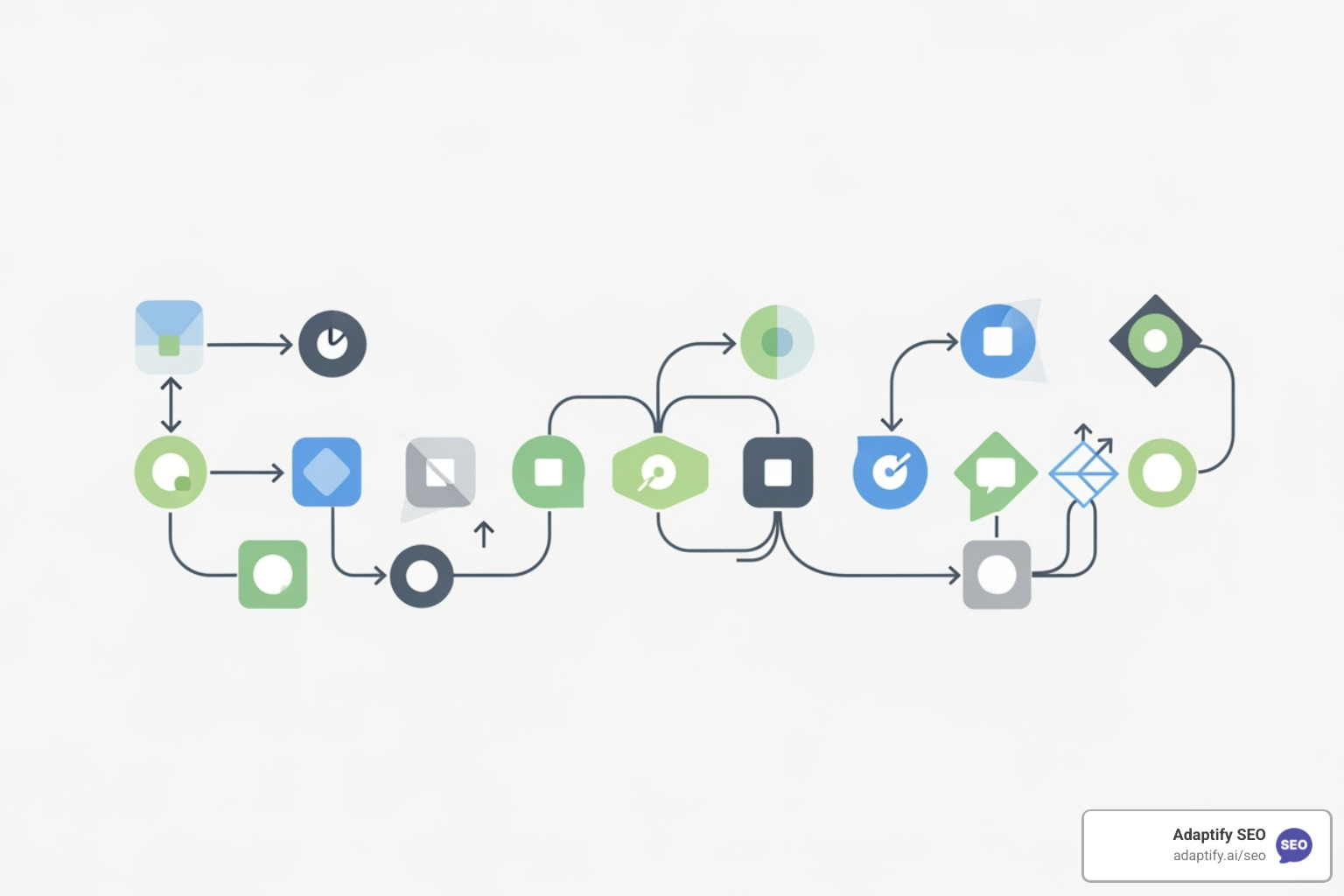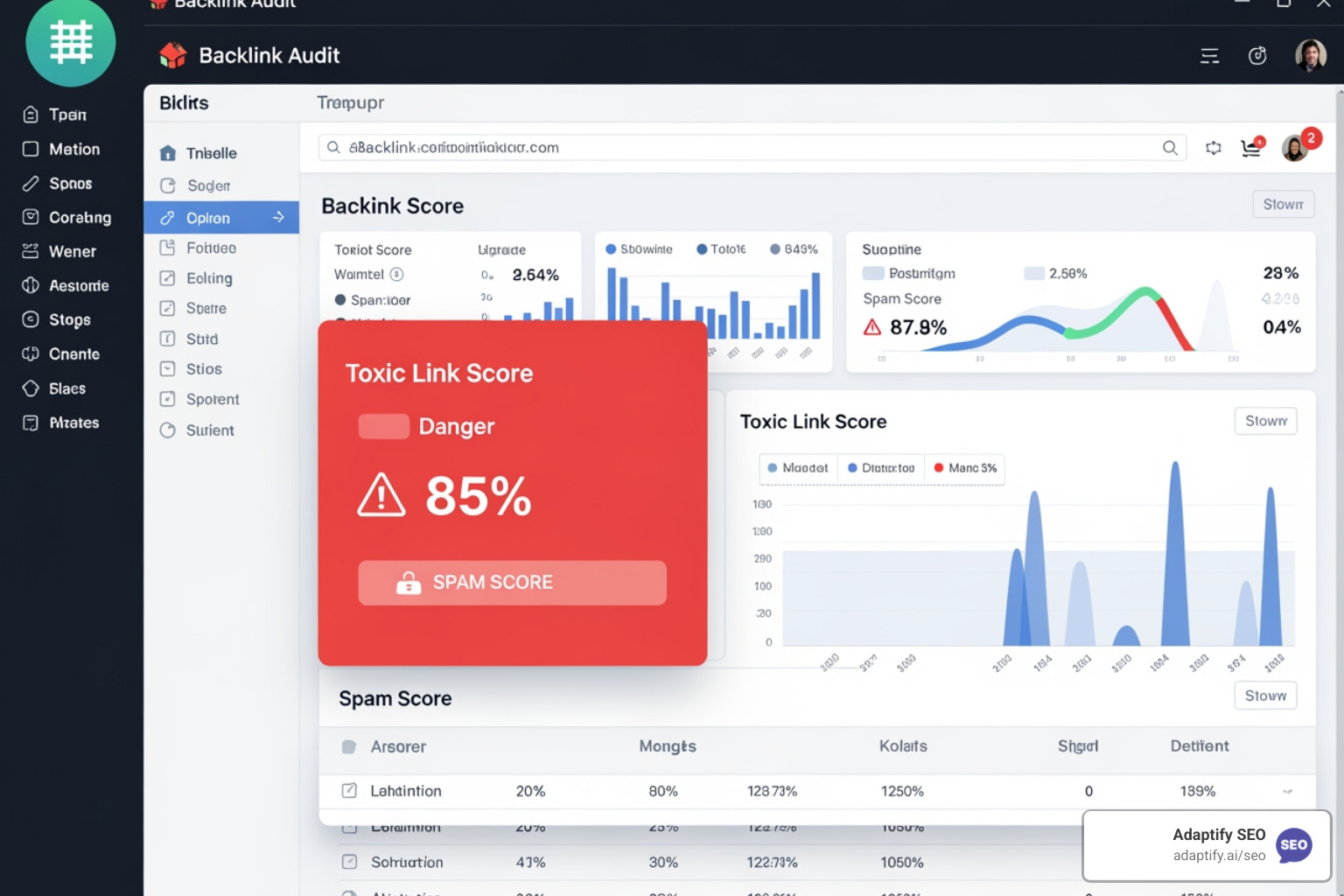Beyond the Link: How to Spot and Secure Backlinks That Actually Matter
Hansjan Kamerling
Nov 14
Why High-Quality Backlinks Are Your Site's Strongest Asset

High Quality Backlinks are links from reputable, relevant websites that search engines trust—and they remain a top ranking factor. But what exactly makes a backlink "high quality"?
A high-quality backlink includes:
- Relevance – The linking site covers topics related to yours.
- Authority – The source has a strong Domain Rating (DR 40+) or similar authority metric.
- Editorial Placement – The link appears naturally within the main content.
- Dofollow Attribute – The link passes SEO value.
- Natural Anchor Text – Uses varied, descriptive text.
- Traffic Potential – The linking page generates real visitors.
Research shows the #1 result on Google has an average of 3.8x more high-authority backlinks than positions 2-10. Yet many still chase low-quality links that Google ignores or treats as spam.
Google's algorithms now use machine learning to understand context and reward genuine editorial endorsements. One link from an established site in your niche carries more weight than dozens from sketchy directories. This guide will help you identify the backlinks that move the needle.
I'm Hansjan Kamerling, and I've spent over a decade helping companies scale through strategic SEO. I've seen how focusing on High Quality Backlinks over volume creates sustainable rankings and real business growth.

The Foundation: Quality Over Quantity in Link Building
Think of backlinks as recommendations. A single glowing endorsement from an industry expert is more trustworthy than a hundred vague comments from strangers. Google views links to your website the same way.
In the early days of SEO, link building was a numbers game. But Google's Penguin update changed everything by targeting manipulative link schemes. Websites built on low-quality links saw their traffic vanish overnight. The message was clear: quality trumps quantity.
Today, backlinks are still votes of confidence, but Google now uses machine learning to understand the context behind each link. Chasing every possible link is not just inefficient—it's risky. Low-quality links can trigger manual penalties and devastate your search visibility. Our approach is simple: one High Quality Backlink from a reputable, relevant site delivers more value than a hundred random ones.
What Defines a High-Quality Backlink in SEO?
A quality backlink has six core characteristics:
- Relevance: A link from a website in your niche carries the most weight. A link from a tech blog to your SaaS platform makes sense; a link from a gambling site is a red flag.
- Authority: The influence of the linking site matters. Tools like Ahrefs (Domain Rating) and Moz (Domain Authority) provide useful indicators. A link from a DR 40+ site is significantly more powerful than one from a new blog.
- Trust: Google evaluates sites based on E-E-A-T (Experience, Expertise, Authoritativeness, and Trustworthiness). You want links from sites that Google already trusts.
- Editorial Placement: The most valuable links appear naturally within the main body of the content, placed there by a human editor. Links in footers, sidebars, or author bios carry far less weight.
- Dofollow Attribute: This attribute allows a link to pass SEO value, or "link juice." While Google now treats nofollow links as hints, dofollow links remain the primary way authority is transferred.
- Natural Anchor Text: The clickable text of a link should be descriptive but not over-optimized with exact-match keywords. A healthy profile includes branded terms, naked URLs, and varied phrases.
Why One Great Link Beats a Hundred Bad Ones
Focusing on volume over value is a common mistake. Here’s why quality wins:
- Link Juice Dilution: A page linking to just a few sites passes more authority per link than a page linking to hundreds.
- Trust Signals: One link from a respected publication tells Google you're legitimate. A hundred links from spammy directories suggest manipulation.
- User Experience: Quality links send qualified, interested visitors to your site. These positive engagement signals indirectly boost your SEO.
- Long-Term Value: High-quality, editorially placed links have remained valuable through every Google algorithm update. They are future-proof.
Don't build links for today's algorithm. Build them for tomorrow's by earning links that would be valuable even if Google changed everything.
The Anatomy of a Power-Packed Backlink: Key Quality Factors
Let's break down the checklist for evaluating any link opportunity.
Domain and Page Authority: The Power of the Source
The authority of the linking website is a primary indicator of a link's quality. We use metrics like Domain Rating (DR) from Ahrefs and Domain Authority (DA) from Moz to gauge a site's strength. While not official Google metrics, they are excellent proxies. A link from a site with a DR of 60-90 carries serious weight.
It's also important to consider the authority of the specific page linking to you, measured by metrics like Page Authority (PA) or URL Rating (UR). A link from a strong page on an authoritative domain is the ideal combination. The goal is to secure links from trustworthy, established domains that Google already respects, such as .edu sites or well-known publications.
Topical Relevance: Staying on Subject
A link from a site in your niche is exponentially more valuable than one from an unrelated source, regardless of its authority. This is topical relevance, and it's non-negotiable for High Quality Backlinks.
Google's Natural Language Processing (NLP) understands the subject matter of content. A link from a moderate-authority site in your exact niche will often outperform a high-authority link from an irrelevant one. If there's no logical reason for a page to link to yours, the link won't help your SEO.
Link Placement and Context: Where Your Link Lives
Where your link appears on a page dramatically affects its value.
The most valuable links are editorial links placed naturally within the main body content. These are seen as genuine endorsements. In contrast, links in footers, sidebars, or author bios carry minimal SEO weight because they are often templated rather than editorially chosen. A link's position also matters; a link near the top of an article typically carries more weight than one at the bottom.
Anchor Text: Best Practices for Maximum Impact
Anchor text—the clickable words in a hyperlink—tells Google what the linked page is about. Over-optimizing anchor text with exact-match keywords is a manipulative tactic that Google penalizes.
A healthy backlink profile has a diverse and natural anchor text distribution, including:
- Branded anchors (your company name)
- Naked URLs (the raw link)
- Generic phrases ("click here," "learn more")
- Partial-match anchors (keywords plus other words)
- Occasional exact-match anchors (when they fit naturally)
Dofollow vs. Nofollow: Understanding the Difference
- Dofollow links are the default and pass link equity (or "link juice") to your site, directly boosting your authority.
- Nofollow links (
rel="nofollow") historically told search engines not to pass SEO value. In 2020, Google began treating them as "hints," meaning they might still be used for crawling or as a signal. You can read more about Google's evolving approach here.
While dofollow links are the priority for direct SEO impact, nofollow links can still drive valuable traffic and contribute to a natural-looking link profile. Google also introduced
rel="sponsored" for paid links and rel="ugc" for user-generated content, giving it more context. A balanced profile with both dofollow and nofollow links is the most sustainable approach.Proven Strategies for Acquiring High-Quality Backlinks

You don't need to beg for High Quality Backlinks. You need to give people a reason to link to you. This requires creating valuable content and using smart, personalized outreach.
Create Linkable Assets People Want to Share
Instead of chasing links, create content so valuable that websites naturally want to reference it. These "linkable assets" are the foundation of a strong link-building strategy.
- Original Research and Data Studies: Publishing unique statistics or insights makes your site the primary source. Other writers must link to you when citing your data. For example, a data study on a trending topic can earn dozens of links without any outreach.
- In-depth Guides: A comprehensive guide that is the best resource on a subject will naturally attract links from other content creators.
- Free Tools and Calculators: A useful tool, like an ROI calculator or industry-specific checker, can attract many links from sites whose audiences would find it helpful.
- Visual Content: Infographics and videos are highly shareable and can generate significantly more engagement and links than text-only content.
Pro tip: Publish these assets on standalone, unique URLs to make them easy to link to and crawl.
Master the Art of Outreach and Relationship Building
Even the best content needs a push. Modern outreach is about building genuine connections, not sending generic email blasts.
Start with personalized emails that show you've read the recipient's content and explain why your resource would genuinely help their audience. Provide value first by engaging with industry influencers on social media, sharing their content, and offering insights without asking for anything in return. Building rapport before you ask for a link dramatically increases your success rate.
How to Identify and Acquire High-Quality Backlinks with Proven Tactics
Beyond creating assets and building relationships, several tactics can reliably generate High Quality Backlinks.
- Guest Posting: Focus on strategic brand placement by writing exceptional articles for niche-specific blogs with high editorial standards. The goal is a contextual link within valuable content, not just a link in an author bio.
- The Skyscraper Technique: Find top-ranking content with many backlinks, create something significantly better (more current, comprehensive, or better designed), and then ask those linking to the original to link to your superior version instead.
- Broken Link Building: Use tools to find broken links on relevant websites. Politely inform the site owner of the dead link and suggest your content as a suitable replacement.
- Unlinked Brand Mentions: Use monitoring tools to find mentions of your brand that don't include a link. Reach out with a friendly request to add one.
- Responding to Media Requests: Use platforms like Help a Reporter Out (HARO) to provide expert quotes to journalists. When your contribution is used, it often comes with a mention and a link from a high-authority publication.
Protecting Your SEO: Auditing Your Profile and Avoiding Pitfalls

Building High Quality Backlinks is only half the battle; you also need to ensure bad ones don't drag you down. Regularly auditing your backlink profile is like weeding a garden—essential for healthy growth.
How to Assess Your Existing Backlink Profile
A regular backlink audit helps you catch problems before they become disasters. My toolkit includes several powerful backlink audit tools. Ahrefs has a massive backlink database, while Semrush's Backlink Audit tool is efficient for identifying toxic links. Moz's Link Explorer provides additional authority insights.
However, Google Search Console is non-negotiable. It's your direct line to Google, showing you which links Google has found and which pages are getting the most links.
When analyzing a profile, I look for red flags:
- A lack of diversity in referring domains.
- Unnatural anchor text distribution stuffed with exact-match keywords.
- A sudden, unnatural spike in link velocity (the speed of link acquisition).
- A high proportion of links from spammy or irrelevant sites.
Common Mistakes and Low-Quality Links to Avoid
Avoid these common mistakes that can set your SEO back months or even years.
- Paid Links: Google's link spam policies explicitly forbid buying or selling links that pass PageRank. The risk of a manual penalty is not worth it.
- Private Blog Networks (PBNs): These are networks of sites created solely to manipulate rankings. Google actively penalizes sites that use them.
- Spammy Directories: Most general web directories are worthless. Only consider niche-specific, curated directories with real user traffic.
- Over-optimized Anchor Text: A profile with dozens of links all using the same keyword phrase is a clear sign of manipulation.
- Irrelevant Links: A link from an unrelated site, no matter how authoritative, will likely be ignored by Google's context-aware algorithms.
The Risks of a Poor Backlink Strategy
The consequences of a poor backlink strategy are severe.
- Google Penalties: A manual or algorithmic penalty can obliterate your organic traffic overnight.
- Loss of Rankings: Google may simply devalue low-quality links, rendering your investment useless.
- Damaged Domain Reputation: A history of spammy link building can make it harder to rank in the future.
- Wasted Resources: Every dollar and hour spent on harmful links is a waste.
My philosophy is to build a defensible SEO presence by focusing on High Quality Backlinks that align with Google's guidelines. If you're concerned about your backlink profile, our team at Adaptify.ai specializes in comprehensive SEO services that prioritize long-term success.
Frequently Asked Questions about High-Quality Backlinks
Here are answers to the most common questions I hear about building backlinks.
How long does it take to see results from building high-quality backlinks?
SEO is a marathon, not a sprint. You can typically expect to see movement from High Quality Backlinks within 2 to 12 weeks, but this varies.
Factors like your competitor landscape, content quality, and your site's existing authority all play a role. A new domain in a competitive niche will take longer to see results than an established site in a less crowded space.
The good news is that quality backlinks have compounding effects. As your profile grows with authoritative links, the impact accelerates. Be patient and focus on quality; the returns get better over time.
How many backlinks should I build per month?
There is no magic number. Trying to hit an arbitrary monthly target can lead to trouble. Google's algorithms recognize natural growth patterns and can flag erratic link velocity (e.g., 200 links one month, 5 the next) as manipulation.
Focus on quality over speed. A handful of valuable, editorially placed links from relevant sites will have more impact than hundreds of low-quality ones. Your goal should be a sustainable and consistent pace of acquisition that looks natural for your industry.
Do social media links count as high-quality backlinks?
The simple answer is no. Social media links are primarily nofollow and do not directly pass PageRank or "link equity."
However, they provide valuable indirect SEO benefits.
- Brand Visibility: Social shares put your content in front of more people, increasing the chance that someone with a website will see it and link to it.
- Referral Traffic: Clicks from social media bring real visitors to your site. Positive engagement from this traffic is a good signal for SEO.
- Findy: Viral content on social media often gets picked up by bloggers and journalists, leading to natural, high-quality backlinks.
Think of social media as an amplifier for your content. It helps your linkable assets get finded, which in turn helps you earn the backlinks that matter.
